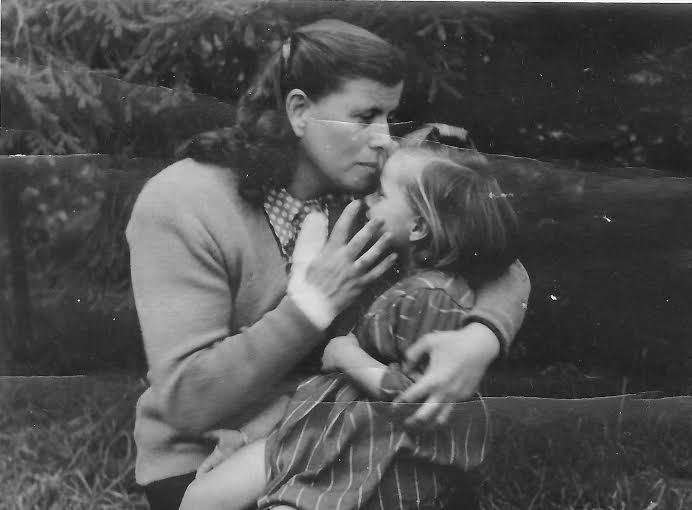
Mother’s Day Was Complicated for the Daughter of a Survivor
In the 1950s, ten cents bought three Cella’s Chocolate Covered Cherries, twenty Mary-Janes, or a new comic book. The concept of allowance was as foreign as white bread to my thrifty European parents, so fifty cents was serious.
I searched the parking meter areas for coins, a slow but steady source of income. But as Mother’s Day neared, I decided to sell my comics. Keeping an Archie and a Superboy, I hit the street and sold the dog-eared comics to other immigrant kids the way I acquired them, for two and three cents each.
By Saturday, I had 37 cents and met my friend for negotiations. I stated that most of the rhinestones were missing, an exaggeration. She was unmoved. I complained that the stamen drooped rather than “boinging.” She made a rude face. Desperate, I delivered my coup de grace: she would never find another buyer by tomorrow, Mother’s Day. She pondered. I cajoled. Then, I pleaded. Finally, she grabbed the coins and thrust the pin at me. The jewel was mine!
I knew this treasure required presentation, and rummaged through the junk drawer, extricating a dented white box and aspirin bottle cotton. I nestled the pin within.
On Sunday, my mother opened my gift with an inscrutable expression on her face. “Where did this come from?” she asked in Yiddish. I related the saga and the sale of my comics. She regarded comics as a waste of money and time, so I knew she was pleased. She thanked me and placed the box on the kitchen table.
Then she returned to cooking. In addition to working, my mother prepared our meals, and washed and cleaned up. My parents did not believe in restaurants, so even on Mother’s Day, they would not succumb to the American mishigas of “going-to-restaurants-to-be-poisoned.” She prepared dinner and I felt let down; I’d expected something different.
Eavesdropping, days later, I heard my mother chatting with our bragging neighbor, whose family had given her a corsage, and taken her to a restaurant. Then, I heard my mother, who never praised her children to their faces, describe the beautiful pin her “little Sara” had given her. I glowed.
I never saw the pin again. It was probably relegated to some cluttered drawer. My mother’s life, and, perhaps her taste, afforded no opportunity to wear such “splendor.” Over time I forgot it.
As I grew older, I babysat and always had an income. My annual quest to add beauty to my mother’s life continued: a black satin evening bag, a gilded dresser-top set, and even the “Evening in Paris” Cologne I had yearned to give her. She never said much on receiving the gifts. Yet I understood that she was touched in a way she was unable to express. My last Mother’s Day gift, months before she died, was a gold heart with a small diamond, which she wore on a chain around her neck. I now wear it around mine.
I collect gaudy old costume jewelry, the kind with lots of rhinestones. At a flea market recently, I saw a familiar-looking flower pin. Some stones were missing, and the stamen had seen “boingier” days. This time, the price was more than thirty-seven cents. I walked away feeling deja vu, and realized I didn’t want to own this pin.
I now have two children, whose gifts I savor. I have popsicle stick jewelry boxes, clay hand prints and ceramic mystery creatures. One year, they gave me a Hollie Hobby Mother’s Day plate which broke, irreparably. I kept the pieces. Another year, a kitty book mark carefully signed “I HOP YOU LIKE THIS LOV ARLIE,” and a cookbook inscribed, “NOW COOK SOMETHING LOVE JEREMY.” When they present me with a florist’s bouquet, I stifle, “Why not flowers from the yard?” Instead, I praise their thoughtfulness and lavish them with appreciation.
I don’t want them to eavesdrop to hear my pleasure.
Sara Nuss-Galles, has been a commentator on Public Radio’s MarketPlace, and published in various media including Lilith, the New York Times and the Los Angeles Times, among others. She has completed a collection of illustrated short stories, “About Those Seven Deadly Sins.”



